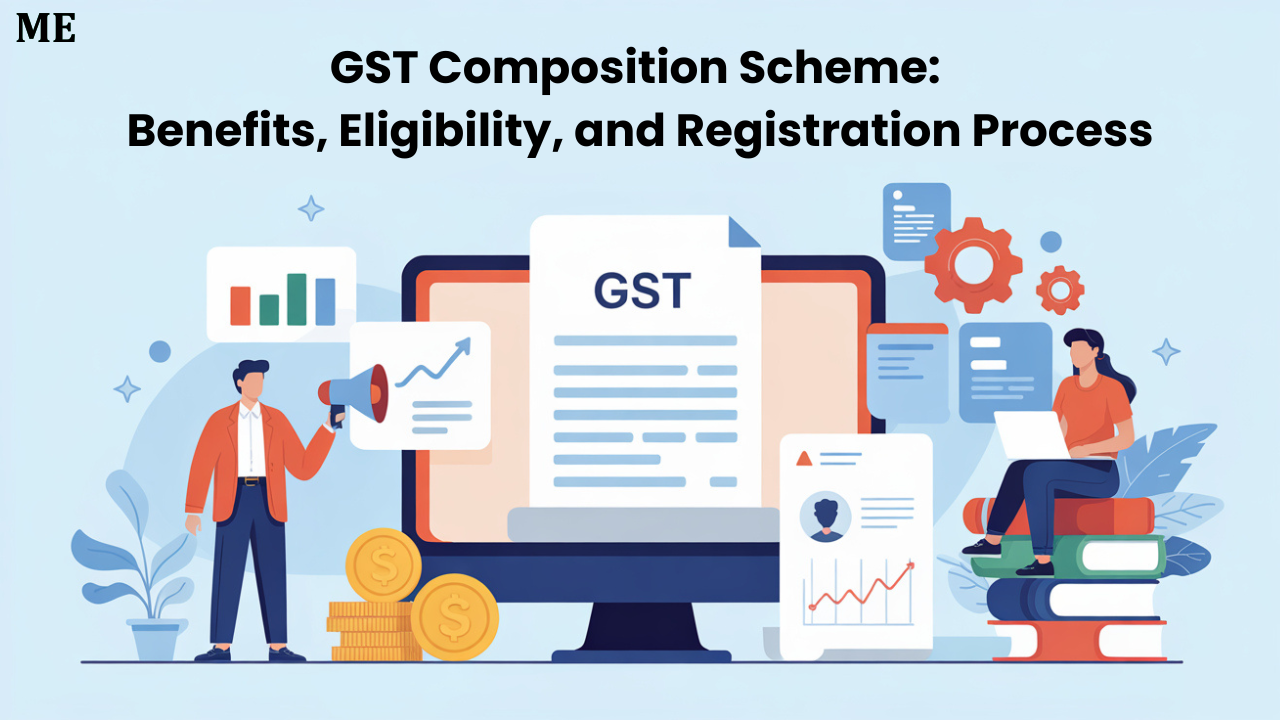
Table of Contents
- introduction
- Eligibility Criteria for the Composition Scheme
- Who Cannot Opt for the Composition Scheme?
- Turnover Limits and Financial Year Considerations
- Tax Rates Under the GST Composition Scheme
- Benefits of the GST Composition Scheme
- Limitations and Restrictions
- Recent Amendments & Updates (2025)
- Registration Process for the Composition Scheme
- Compliance Requirements
- Switching from Composition to Regular Scheme
- Conclusion
introduction
The GST Composition Scheme offers small businesses a streamlined approach to tax compliance under the Goods and Services Tax framework. This scheme allows eligible dealers to pay tax at fixed rates based on their turnover rather than on individual transactions, significantly reducing compliance burdens.
Eligibility Criteria for the Composition Scheme
Businesses can opt for the GST Composition Scheme if they meet these specific requirements:
- Manufacturers, traders, and restaurants with an annual turnover of up to ₹1.5 crore (₹75 lakh for north eastern states and Himachal Pradesh)
- Service providers with an annual turnover of up to ₹50 lakh
- Intra-state suppliers only (businesses cannot engage in inter state supplies)
- Businesses that do not supply non-GST goods (like alcohol, petroleum products)
Who Cannot Opt for the Composition Scheme?
The following businesses are ineligible for the composition scheme under GST:
- Businesses engaged in interstate sales or exports
- Suppliers of goods through an e-commerce operator, unless permitted under specific conditions
- Casual taxable person and resident taxable person
- Manufacturer of ice cream, pan masala, or tobacco products
- Businesses involved in transactions under the reverse charge mechanism
Turnover Limits and Financial Year Considerations
The eligibility limit varies based on business type and location:
The turnover limit is calculated based on the turnover of all businesses under the same PAN in the previous financial year.
Tax Rates Under the GST Composition Scheme
Businesses that have opted for the composition scheme pay GST at these reduced rates:
Important: A dealer is required to pay tax from their own pocket as they cannot charge GST separately from customers under this scheme.
Benefits of the GST Composition Scheme
The composition scheme offers several advantages for small businesses:
- Lower tax rates reduce the financial burden on small businesses
- Simplified compliance with quarterly return filing (CMP-08) instead of monthly returns
- No requirement to issue tax invoices — businesses can provide a bill of supply instead
- Limited record-keeping requirements, making bookkeeping significantly easier
- Reduced compliance costs for the composition dealer
Limitations and Restrictions
Despite its benefits, the scheme has certain limitations:
- No input tax credit can be claimed by businesses
- Cannot supply goods outside the state or engage in exports
- Cannot collect tax separately from customers
- Limited eligibility for businesses selling restricted goods
Recent Amendments & Updates (2025)
The GST Composition Scheme has undergone several changes based on cost amendment act 2018 and recent GST rate revisions:
- Inclusion of E-commerce Suppliers: Certain intra-state e-commerce suppliers can now opt for the Composition Scheme under specific conditions
- Revised Tax Rate for Services: Service providers with annual turnover up to ₹50 lakh can now opt for a 6% composition tax rate
- Enhanced Compliance Measures: Form GST CMP-02 is now mandatory for opting into the scheme at the start of a financial year
- Sector-Specific Composition Rates: Businesses in sectors like textiles and food processing may see further rate adjustments in upcoming GST Council meetings
Registration Process for the Composition Scheme
Businesses can apply for the GST Composition Scheme using these forms:
- New businesses: Select the Composition Scheme while registering under GST (Form GST REG-01)
- Existing taxpayers: File Form GST CMP-02 before the start of the financial year
- Quarterly tax payment: Use Form CMP-08
- Annual return filing: Submit Form GSTR-4 annually
Compliance Requirements
Businesses operating under the composition scheme must:
- Issue a bill of supply instead of a tax invoice
- Display a sign indicating "Composition Taxable Person" at their place of business
- Mention "composition taxable person, not eligible to collect tax" on every bill of supply
- File quarterly returns (Form CMP-08) and one annual return (GSTR-4)
- Maintain simplified records of their supply goods transactions
Switching from Composition to Regular Scheme
A business that has opted for the composition scheme may need to switch to the regular scheme if:
- Its turnover exceeds the threshold limit
- It begins supplying goods or services that are not eligible under the composition scheme
- It engages in inter state supplies
In such cases, the business must:
- File Form GST CMP-04 within 7 days of becoming ineligible
- Start issuing tax invoices and collecting GST from customers
- Begin maintaining detailed records as required under regular GST registration
Conclusion
The GST Composition Scheme is an excellent choice for small businesses looking to simplify compliance and reduce tax liabilities. It provides substantial relief to small traders, manufacturers, and restaurants with turnover up to ₹1.5 crore, and service providers with turnover up to ₹50 lakh.
However, businesses must carefully evaluate their eligibility and operational requirements, as the scheme restricts interstate trade, exports, and input tax credit claims. The recent amendments have made the scheme more inclusive by allowing certain e-commerce businesses and service providers to participate, benefiting a broader range of small businesses.
For businesses with predominantly B2C operations within a single state, the composition scheme offers a straightforward and cost-effective compliance solution under the GST framework.
